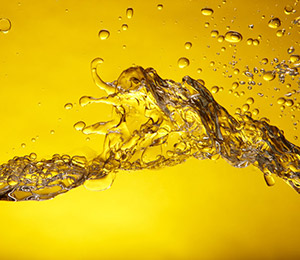
Apherisis Procedures
Apheresis – also referred to as dialysis – is a method that specifically removes blood parts or pathogens from the blood or blood plasma. This is done outside of the body in complex apheresis machines. Afterwards, the cleaned blood or blood plasma returns to the body. The method is generally tolerated very well.
We apply the following apheresis depending on indication:
- Diagnostic apheresis for discovery, isolation and qualification of circulating tumour stem cells
- Stem cell apheresis for production of endogenous vaccines
- Apheresis for acquisition of natural killer cells
- Photopheresis – Separation and treatment of aggressive lymphocytes
- Plasmapheresis – Isolation of blood plasma from whole blood and removal of pathogenic substances
- Lipid-apheresis – Isolation and removal of cholesterol and blood fats
Diagnostic apheresis for discovery, isolation and quantification of circulating tumour stem cells.
Diagnostic apheresis permits the production of tumour stem cells from the blood without requiring a biopsy. Outside of the body, these cells can then be examined for specific cancer antigens and their metastasis potential. This procedure is suitable for early recognition, for exclusion of metastases and for progress review.
Stem cell apheresis of producing endogenous vaccines.
The tumour stem cells circulating in patient’s veins are needed to produce a vaccine. They are acquired by apheresis and isolated in the lab. The tumour stem cells are then exposed to extreme heat in order to destroy them. Due to this, they express cell-stabilising heat shock proteins/tumour antigens.
- Heat-shock proteins support the immune defence in managing cellular stress situations.
- Heat-shock proteins that we take from the destroyed tumour stem cells will trigger a specific immuno-response of the tumour as an endogenous vaccine.
The vaccines support the natural killer cells (NK cells) in recognising their targets by individually specific endogenous tumour antigens of the respective patient. The immune response therefore is reinforced. See Endogenous vaccines.
Apheresis for the production of natural killer cells.
We acquire the NK cells from the patient’s own blood by leucocyte apheresis. The apheretically won cells will be separated into various fractions by a density gradient. Thereafter, the relevant cells will be washed multiple times until the desired degree of purity is achieved. This purging ensures that no tumour cells/tumour stem cells are cultivated as well.
We reproduce the NK cells under ideal conditions in a cell culture and return them to the patient, multiplied by way of infusion. Monitoring of the tumour cell number enables us to review reaction to the therapeutic measures.
Extracorporeal photopheresis.
Light therapy in immune regulation interferences.
T-cell leukaemia, scleroderma and specific autoimmune diseases all have in common that derailed endogenous lymphocytes attack the patient’s health. Extracorporeal photopheresis is a very gentle procedure here that deactivates these aggressive lymphocytes outside of the body.
Apheresis methods collect the patients’ lymphocytes and isolate them from the remaining parts of their blood. The lymphocytes are prepared in order to react sensitively to light. Subsequently the diseased cells will be “exposed” to light of a specific wavelength (medical UV-A light). In contrast to many other treatments, healthy cells are not destroyed by this and photopheresis is easily compatible. The body is cleared of misinformation “extra-corporally” and healthy self-healing forces are stimulated. The treated lymphocytes are retuned into the patient’s blood. The previously aggressive lymphocytes are not only inactivated, but can also emit their immunological information to healthy lymphocytes that have remained cooperative, thereby enabling them to recognise and fight aggressive lymphocytes in the future.
Indications
Among others:
-
- Progressive systemic scleroderma
- T-cell leukaemia
- T-cell dependent diseases
- Systemic Lupus erythematosus
- Crohn’s disease
- Autoimmune diabetes
- Graft versus host disease
- Pemphigus vulgaris
- Rheumatoid arthritis
- B-cell leukaemia
- Colitis ulcerosa
Detoxing by Plasmapheresis:
Plasmapheresis (from Greek: apheresis = to remove, to take away) is a special treatment method that divides the blood into its parts and cleans the plasma of pathogenic and toxic components. It is suitable for treating autoimmune and systemic diseases and to remove substances hazardous to health, such as pesticides, insecticides and heavy metals.
Blood cleansing takes place gently outside of the body. A cannula in the arm vein will route blood into a circulation outside of the body, thus separating the blood cells from the blood plasma. The plasma is pumped through a filter. The cleaned blood then returns into the body. The body is cleared of wrong information and the healthy self-healing powers are stimulated.
Lipid apheresis.
Lipid apheresis removes LDL cholesterol and other factors of arteriosclerosis, such as lipoprotein(a) and triglycerides from the blood – among other things in case of severe fat metabolism disorders. It is particularly suitable for patients who do not react to treatment by special diet and medicines to reduce their LDL cholesterol, or do not react sufficiently to this.

Blood analysis
The amount and precision or our measurements of amino acids, minerals, vitamins, and pathogens in our Munich lab is unique.

Apheresis
Our concept combines conventional and alternative methods. Apheresis procedures are an important diagnostic and therapeutic component of our integrative medicine.

Immunotherapy
By multiplying the body's own killer cells we activate the immune system target specific. Among other things for the treatment of cancer and viral diseases.





